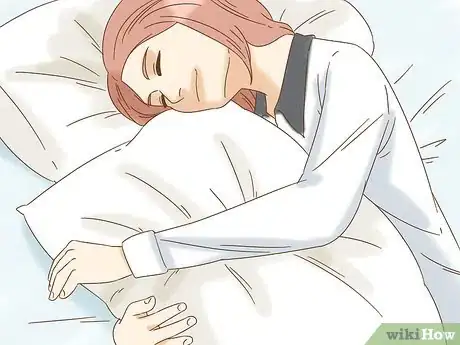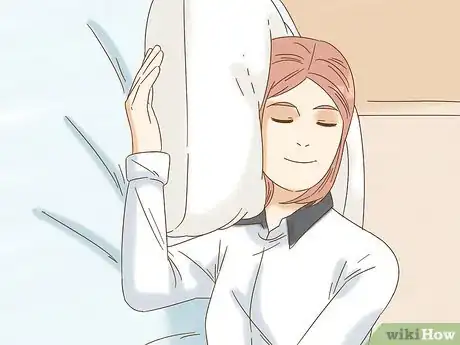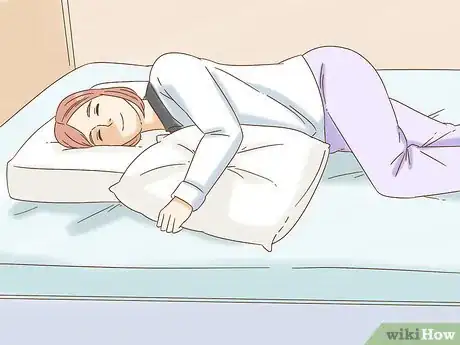This article was co-authored by Jonathan Frank, MD. Dr. Jonathan Frank is an Orthopedic Surgeon based in Beverly Hills, California, specializing in sports medicine and joint preservation. Dr. Frank's practice focuses on minimally invasive, arthroscopic surgery of the knee, shoulder, hip, and elbow. Dr. Frank holds an MD from the University of California, Los Angeles School of Medicine. He completed an orthopedic residency at Rush University Medical Center in Chicago and a fellowship in Orthopedic Sports Medicine and Hip Preservation at the Steadman Clinic in Vail, Colorado. He is a staff team physician for the US Ski and Snowboard Team. Dr. Frank is currently a scientific reviewer for top peer-reviewed scientific journals, and his research has been presented at regional, national, and international orthopedic conferences, winning several awards including the prestigious Mark Coventry and William A Grana awards.
There are 10 references cited in this article, which can be found at the bottom of the page.
This article has been viewed 47,056 times.
Sleeping on your side has a number of benefits, including reduced snoring, better digestion, and improved circulation. It is important to take measures to ensure that you lie in a straight position, especially if you have injuries, as this helps to prevent joint pain. Use towels and pillows as props to support your neck, spine, and hips. If you aren’t used to sleeping on your side, it will likely take about a month to train your body to sleep in a new position. Over time, your body will thank you for providing it with an ergonomic sleeping position!
Steps
Avoiding Spine, Hip, and Shoulder Pain
-
1Choose a firm pillow that keeps your neck straight. This helps to prevent neck and upper back pain. The height of the pillow that you require depends on how broad your shoulders are. If you have broad shoulders, you will require a thicker pillow in order to fill the cavity between the mattress and your neck.[1]
- Ask a friend to observe the position of your neck when you are lying on your side with a pillow, as it is hard to check the position of your own neck.
-
2Place a thin pillow between your knees to keep your hips aligned. This causes your knees, hips, and spine to lie in a straight line, which helps to prevent pain. Place the pillow between your knees to stop them from touching and then position it so that it lies between your knees and ankles.[2]
- If you can still feel pressure between your knees, use a thicker pillow.
Advertisement -
3Avoid pulling your knees toward your chest. Whilst the foetal position can feel comfortable initially, over time, it can cause lower back pain because your spine is curved. Try to keep your legs straight or slightly bent rather than pulling them close toward your belly button.[3]
- If you find it hard to keep your knees down, place pillows where your knees would normally sit to block the space.
-
4Hug a pillow into your chest if you get sore shoulders. If you have shoulder pain, it may be because your shoulders are pushing toward each other. To open up your chest cavity, place a pillow over your stomach and chest and wrap your arms around it.[4]
- Experiment with different kinds of pillows to see which feels most comfortable. If you are petite, you might find a thin pillow easier to hug. However, if you have a larger build, you might enjoy a thicker pillow.
-
5Position your bottom arm at a 90-degree angle to your side. Avoid placing your bottom arm under your head as a pillow, as this can cause neck and shoulder pain. Place the bicep section of your arm at a 90-degree angle to your side and allow your forearm to lie wherever it feels comfortable.[5]
- If your arm continues to move under your neck out of habit, use a firmer pillow to block it.
-
6Try a firmer mattress if you get sore shoulders or hips. If your mattress is too soft, it won’t keep your spine straight and will place added pressure onto your shoulders and hips. Choose a mattress that allows your spine to lie straight when you lie on your side.[6]
- Ask the mattress store about their returns policy, as many stores allow you to try the mattress for a few weeks and return it if doesn’t work well for your body.
-
7Place a rolled hand towel under your waist to ease back and hip pain. This helps to lift your waist up and causes your spine to lie in a straight position, which can help to prevent back and hip pain. Roll up the hand towel and place it widthways under the narrowest section of your waist. If you turn over during the night, try to maintain the position of the towel under your waist.[7]
- Wrap the hand towel tightly to stop it from coming undone.
- If you don’t have a hand towel, use a small towel instead.
Training Yourself to Sleep on Your Side
-
1Sleep against a wall to stop yourself from turning over. If you are used to sleeping on your stomach and want to sleep on your side, move your bed against a wall and sleep facing the wall. If you try to turn over while you're asleep, you will hit the wall and be forced to roll back onto your side.
- It normally takes about a month to change your sleeping habits.
-
2Place a pillow under your underarms to help you stay on your side. Tuck the pillow under your underarm, just below your shoulder. Position the rest of the pillow in front of your torso. This helps to create a blockage that makes it harder for you to roll onto your stomach.[8]
- Thick pillows work best for this, as they create a higher barrier.
-
3Tape a marble to your chest to stop yourself from sleeping on your stomach. Use a sticky plaster or tape to attach the marble to your upper chest. When you roll onto your stomach, the marble will push into your chest and the uncomfortable sensation will wake you up. Continue to stick the marble to your chest until you no longer roll onto your stomach.[9]
- If the marble doesn’t wake you up, use a tennis ball instead.
-
4Sleep on your left side if you experience heartburn. If you often experience reflux or heartburn during the night, it may be because you sleep on your right side. Try sleeping on your left night for a week to see if it helps to relieve your symptoms.[10]
- Try sleeping on the left side of the bed, as this helps you to sleep on your left side.
Expert Interview
Thanks for reading our article! If you'd like to learn more about sleeping on your side, check out our in-depth with Jonathan Frank, MD.
References
- ↑ https://youtu.be/or03pT-D8cQ?t=511
- ↑ https://youtu.be/or03pT-D8cQ?t=270
- ↑ https://youtu.be/or03pT-D8cQ?t=286
- ↑ https://youtu.be/or03pT-D8cQ?t=427
- ↑ https://youtu.be/or03pT-D8cQ?t=477
- ↑ https://youtu.be/1pxm-WAbx5o?t=24
- ↑ https://youtu.be/qZeosT6aGx8?t=153
- ↑ https://youtu.be/Kcu5t0LLm7U?t=98
- ↑ https://youtu.be/Kcu5t0LLm7U?t=121






































































